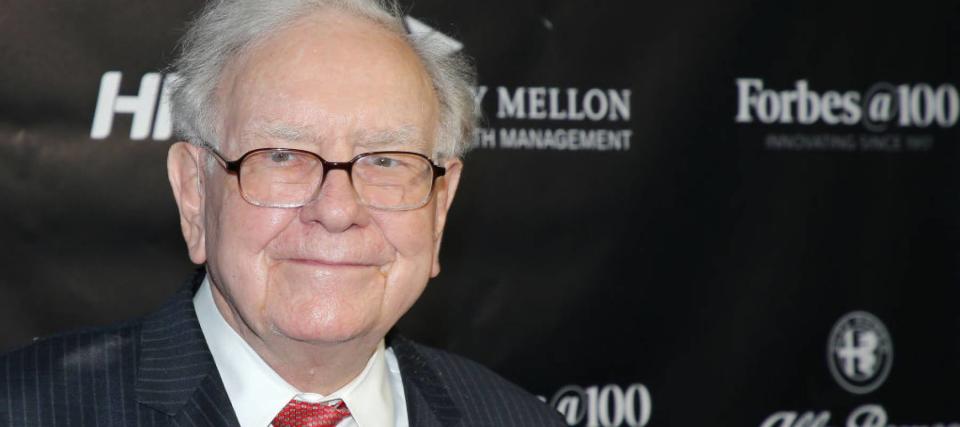3 bad investing mistakes that put your retirement at serious risk, according to Warren Buffett

After nearly seven decades of experience, investing legend Warren Buffett has accumulated more than $141 billion in personal wealth — and the Oracle of Omaha believes much of his success is based on his ability to avoid losing money.
Don't miss
Commercial real estate has beaten the stock market for 25 years — but only the super rich could buy in. Here's how even ordinary investors can become the landlord of Walmart, Whole Foods or Kroger
Car insurance premiums in America are through the roof — and only getting worse. But 5 minutes could have you paying as little as $29/month
These 5 magic money moves will boost you up America's net worth ladder in 2024 — and you can complete each step within minutes. Here's how
“You only have to do a very few things right in your life so long as you don't do too many things wrong,” he once said.
With that in mind, here are three investment mistakes you should avoid in order to secure your fortune for the long-term.
1. Speculating instead of investing
Some investors fail to recognize the difference between a speculative asset and an investment-worthy asset. According to Buffett, the difference is in how the asset generates a return.
“All investment is, is laying out some money now to get more money back in the future,” Buffett once explained. “Now, there’s two ways of looking at getting the money back. One is from what the asset itself will produce. That’s investment. [The other] is from what somebody else will pay you for it later on, irrespective of what the asset produces. And I call that speculation.”
Based on this philosophy, assets that produce income organically — such as farmland, profitable companies, dividend stocks and real estate investment trusts — are investment-worthy.
On the flip side, speculative assets, such as Bitcoin, fine art, or an unprofitable tech startup, are exposed to unpredictable market sentiments.
Investors looking for exposure to robust earnings could consider the iShares Core Dividend Growth ETF (DGRO).
Read more: Car insurance rates have spiked in the US to a stunning $2,150/year — but you can be smarter than that. Here's how you can save yourself as much as $820 annually in minutes (it's 100% free)
2. Trying to time the market
Market timing is deceptively tempting. Investors often convince themselves they can wait for the right time to buy or sell a stock. However, experienced investors understand that market cycles are unpredictable, so staying invested for longer is typically the best approach.
Data analyzed by RBC Global Asset Management found that an investor with perfect timing only modestly outperformed an investor who was dollar-cost averaging.
In other words, putting a fixed dollar amount into the S&P 500 every month from 2004 to 2023 was mildly less profitable than perfectly predicting every market peak and bottom.
However, one of these strategies is much easier to deploy, and that’s the one most investors should probably focus on.
3. Overpaying
During market bubbles and speculative manias, investors run the risk of overpaying for assets. This can be detrimental for returns.
“No matter how wonderful a business it is, there always is a risk that you will pay a price [and] that it will take a few years for the business to catch up with the stock,” Buffett once said at a shareholder meeting. In other words, valuation shouldn’t be overlooked.
For instance, a stock trading at 100 times earnings per share could take 100 years to recover the initial investment if the price and earnings remain the same. Earnings growth and price appreciation are difficult to predict, so you’re exposed to too much risk when you pay such a premium.
On the other hand, a stock trading at a price-to-earnings ratio of five could take only five years to return your initial investment. Even if there is no growth in earnings or stock price over this period, you have recovered your initial investment based solely on organic earnings. Buffett, and other investment professionals, prefer these low-risk investments.
Bank of America, Buffett’s second-largest holding, trades at a forward price-to-earnings ratio of roughly 13%, as of July 2024. Compare that to Tesla, which trades at a forward price-to-earnings ratio of 99%.
What to read next
Cost-of-living in America is still out of control — use these 3 'real assets' to protect your wealth today, no matter what the US Fed does or says
Jeff Bezos and Oprah Winfrey invest in this asset to keep their wealth safe — you may want to do the same in 2024
Stop crushing your retirement dreams with wealth-killing costs and headaches — here are 10 'must-haves' when choosing a trading platform (and 1 option that has them all)
This article provides information only and should not be construed as advice. It is provided without warranty of any kind.